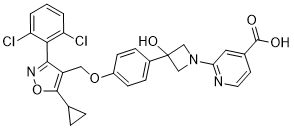While plants lack a true laforin ortholog, laforin is conserved in the genome of five protozoans. We previously demonstrated that Cm-laforin possesses the same biochemical signature as laforin, in that they both bind glucans and can dephosphorylate phospho-glucans. Given the functional similarities between human laforin, Cm-laforin, and SEX4, we used SEX4 and Cm-laforin in the current study to evaluate if the oligomerization phenomenon is true of all glucan phosphatases. We purified SEX4 and Cm-laforin using a similar two-step purification method that included size exclusion chromatography. For each protein, we observed that multiple peaks were eluted from the column, similar as we observed for human laforin. We analyzed the ratio of SEX4 and Cm-laforin monomer and dimer fractions via immunoblotting, as was performed for Hs-laforin in Figure 2B. Then we tested the phosphatase activity of SEX4 using both pNPP and malachite green assays. We found that monomeric SEX4 has a slightly higher specific activity than dimer using both pNPP and malachite green as substrates. For Cm-laforin, the specific activity against pNPP of the monomer form was three times higher than that of dimer; whereas the malachite green assay showed that the glucan phosphatase activity of Cm-laforin was similar for monomer and dimer. Hs-laforin, SEX4, and Cm-laforin all belong to glucan phosphatase family. These results demonstrate that glucan phosphatases from different Kingdoms are all active in the monomeric form. Interestingly, dimeric forms of glucan phosphatases from different Kingdoms exhibit different phosphatase activity, suggesting different modes of actions for each dimeric form. The finding that storage of laforin in low levels of DTT is necessary prompted us to further examine the effect of reducing agents on laforin oligomerization and phosphatase activity. When we analyzed the non-reducing peak of laforin by gel electrophoresis under non-reducing conditions, we observed the presence of laforin monomers, dimers, and multimers. However, if we added increasing amounts of DTT we found that laforin oligomerization was reversed and at 100 mM DTT only monomeric laforin remained. These results suggest that laforin oligomerization is very sensitive to oxidation, and that multiple species of laforin form under non-reducing conditions. These species may result from intermolecular disulphide bond formation among the nine cysteine residues present in laforin. Additionally, these results show that the amount of DTT commonly utilized in phosphatase assays does not affect dimerization or multimerization. However, these low levels of DTT are necessary to keep the catalytic cysteine reduced. Dual specificity phosphatases employ a two-step catalytic mechanism. After nucleophilic attack of the substrate phosphorus atom, a phosphoryl-cysteine intermediate is formed before hydrolysis of the intermediate and release of phosphate. In oxidative environments, this catalytic cysteine is modified and inactivated. In order to define the relationship between oxidation of laforin and its phosphatase activity, we examined the phosphatase activity of laforin that was purified and stored in the absence of DTT using the exogenous substrate 3-O-methyl fluorescein phosphate. We found that the  phosphatase activity of laforin was dependent on the presence of DTT in the reaction buffer: without DTT the activity was abolished, whereas in the presence of 10 mM DTT the activity was significantly higher.
phosphatase activity of laforin was dependent on the presence of DTT in the reaction buffer: without DTT the activity was abolished, whereas in the presence of 10 mM DTT the activity was significantly higher.
This has actually been one more in-depth and also exact topic on Variability of MDD and CRHR1 gene is likely to be involved in the antidepressant response in MDD, to learn even more and sustain our job, please see http://www.tolllikereceptor.com/index.php/2019/02/24/striking-lead-improvement-lv-ef-long-term/.